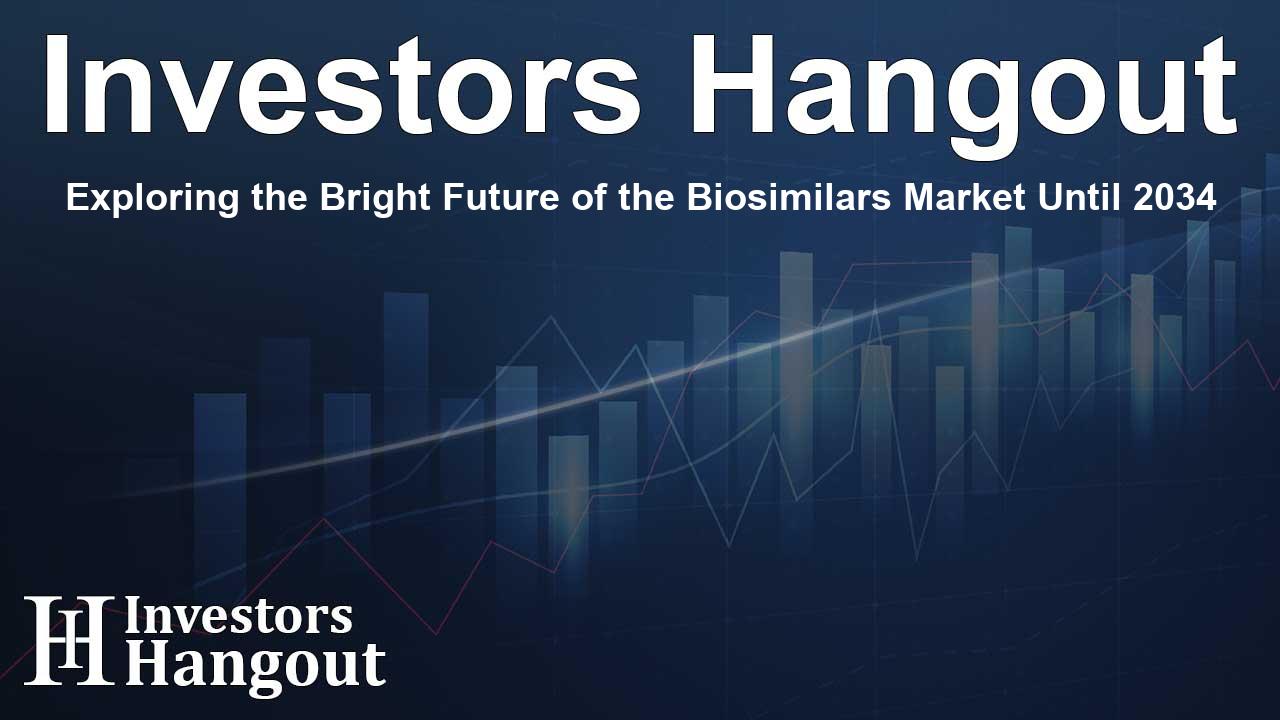Exploring the Bright Future of the Biosimilars Market Until 2034

The Transformative Growth of the Biosimilars Market
Biosimilars have become a crucial element within the global healthcare framework, offering more affordable alternatives to expensive biologic treatments and increasing patient access to essential therapies. The current biosimilars market is witnessing remarkable growth, with projections estimating a valuation of around $25 billion by the end of 2024. This upward trajectory is expected to continue, reaching around $60 billion by 2034, showcasing an impressive Compound Annual Growth Rate (CAGR) of around 9% during the period from 2025 to 2034.
Market Insights and Key Segments
The biosimilars landscape reveals a diversified portfolio of products, segmented by therapeutics, disease indications, and geographical regions. The primary categories of biosimilars encompass monoclonal antibodies, insulin, and growth factors, with a variety of applications spanning oncology, autoimmune disorders, and chronic diseases.
Product Segmentation
- Monoclonal Antibodies: This category includes major treatments like Infliximab, Trastuzumab, and Rituximab, known for their applications in cancer and autoimmune diseases.
- Insulin Treatments: Increasing diabetes prevalence is driving the demand for insulin biosimilars, essential for managing blood sugar levels effectively.
- Growth Factors: These include products like Erythropoietin and Granulocyte Colony-Stimulating Factor, key in supporting patients with blood disorders.
Indication-Based Segmentation
Market analysis highlights the growing interest in pathways that focus on targeting specific disease conditions. Oncology remains a significant driver, alongside inflammatory and autoimmune disorders, further emphasizing the need for innovative and accessible therapies.
Regulatory Landscape and Adoption
Regulatory frameworks are evolving to support the integration of biosimilars into healthcare systems. The FDA and other global entities are actively working on improving approval processes, ensuring that patients can access safe and effective biosimilar treatments. This positive regulatory climate is critical for fostering trust and increasing adoption rates among healthcare providers and patients.
FDA Initiatives
- Significant strides have been made with over 60 biosimilars being approved in the U.S. as of late 2024.
- The introduction of interchangeable biosimilars will streamline treatment options and further enhance competition within the market.
Challenges and Opportunities Ahead
Despite the encouraging growth and regulatory support, the biosimilars market still faces challenges. Issues such as misaligned incentives among stakeholders and formulary exclusions by pharmacy benefit managers (PBMs) can create barriers to entry for several products. Nevertheless, as awareness increases regarding the safety and effectiveness of biosimilars, the market is bound to expand.
Market Players On the Rise
Major players in the biosimilars sector include established names like Amgen, Novartis/Sandoz, and Pfizer, offering competitive products designed to meet various patient needs. Emerging companies are also making their mark, helping to reshape the competitive landscape.
Future Directions in the Biosimilars Market
Looking ahead, the biosimilars market is poised for continued expansion. The increasing prevalence of chronic diseases, along with high healthcare costs, drives demand for these cost-effective alternatives. As healthcare systems become more receptive to biosimilars, their market share is expected to rise significantly, leading to enhanced patient outcomes through greater access to treatment.
Conclusion
The biosimilars market represents a transformative shift in healthcare, focused on delivering quality therapies that were previously out of reach for many patients. Stakeholders must navigate the complex landscape of regulations, market dynamics, and patient education to maximize the potential of biosimilars as they move towards a brighter future.
Frequently Asked Questions
1. What are biosimilars?
Biosimilars are biologic medical products highly similar to already approved reference biologics, without clinically meaningful differences in safety or effectiveness.
2. How is the biosimilars market expected to grow by 2034?
The market is projected to expand significantly, with estimates reaching around $60 billion by 2034, driven by increasing demand and regulatory support.
3. What challenges do biosimilars face?
Challenges include regulatory hurdles, PBM formulary exclusions, and market education, which can slow adoption despite their benefits.
4. Who are the major players in the biosimilars market?
Key players include Amgen, Novartis/Sandoz, Pfizer, and several emerging companies, all contributing to the dynamic biosimilars landscape.
5. Why are biosimilars important for healthcare?
Biosimilars offer more affordable treatment options, thereby increasing patient access to essential therapies and reducing overall healthcare costs.
About The Author
Contact Ryan Hughes privately here. Or send an email with ATTN: Ryan Hughes as the subject to contact@investorshangout.com.
About Investors Hangout
Investors Hangout is a leading online stock forum for financial discussion and learning, offering a wide range of free tools and resources. It draws in traders of all levels, who exchange market knowledge, investigate trading tactics, and keep an eye on industry developments in real time. Featuring financial articles, stock message boards, quotes, charts, company profiles, and live news updates. Through cooperative learning and a wealth of informational resources, it helps users from novices creating their first portfolios to experts honing their techniques. Join Investors Hangout today: https://investorshangout.com/
The content of this article is based on factual, publicly available information and does not represent legal, financial, or investment advice. Investors Hangout does not offer financial advice, and the author is not a licensed financial advisor. Consult a qualified advisor before making any financial or investment decisions based on this article. This article should not be considered advice to purchase, sell, or hold any securities or other investments. If any of the material provided here is inaccurate, please contact us for corrections.
